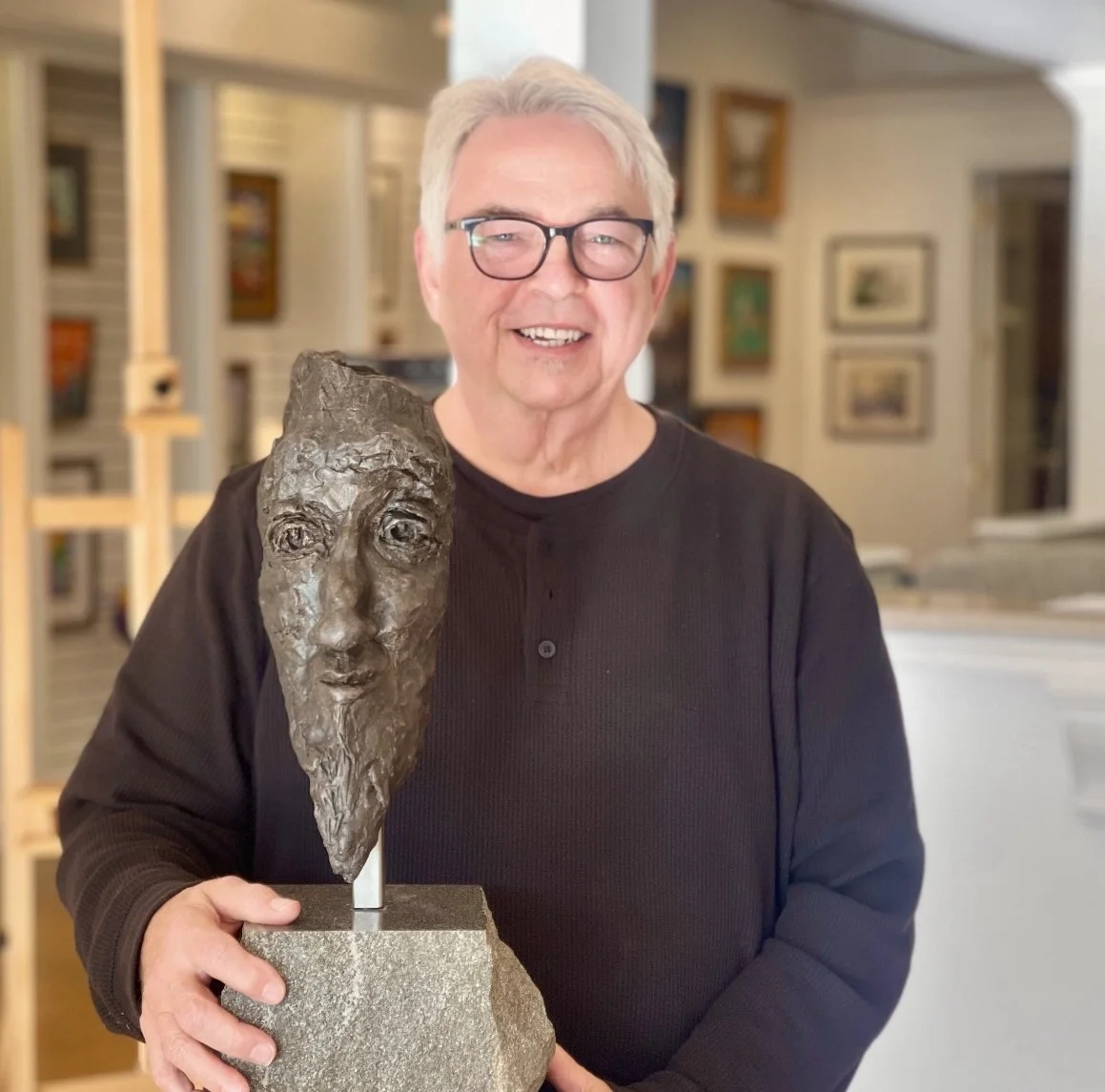Interview with artist Faye Hedera
Faye Hedera is a Conway, Arkansas visual artist. Her paintings are mostly portraits in vibrant colors and she recently completed the 100 Faces of Conway Project, where she painted portraits of members of her Conway community to honor them and help build an even stronger community. She is also the acting president of the Central Arkansas Collective, a diverse group of artists who seek to foster and promote the talents of local artists. More of Faye’s work can be found at Central Arkansas Collective and at her website fayehedera.com.
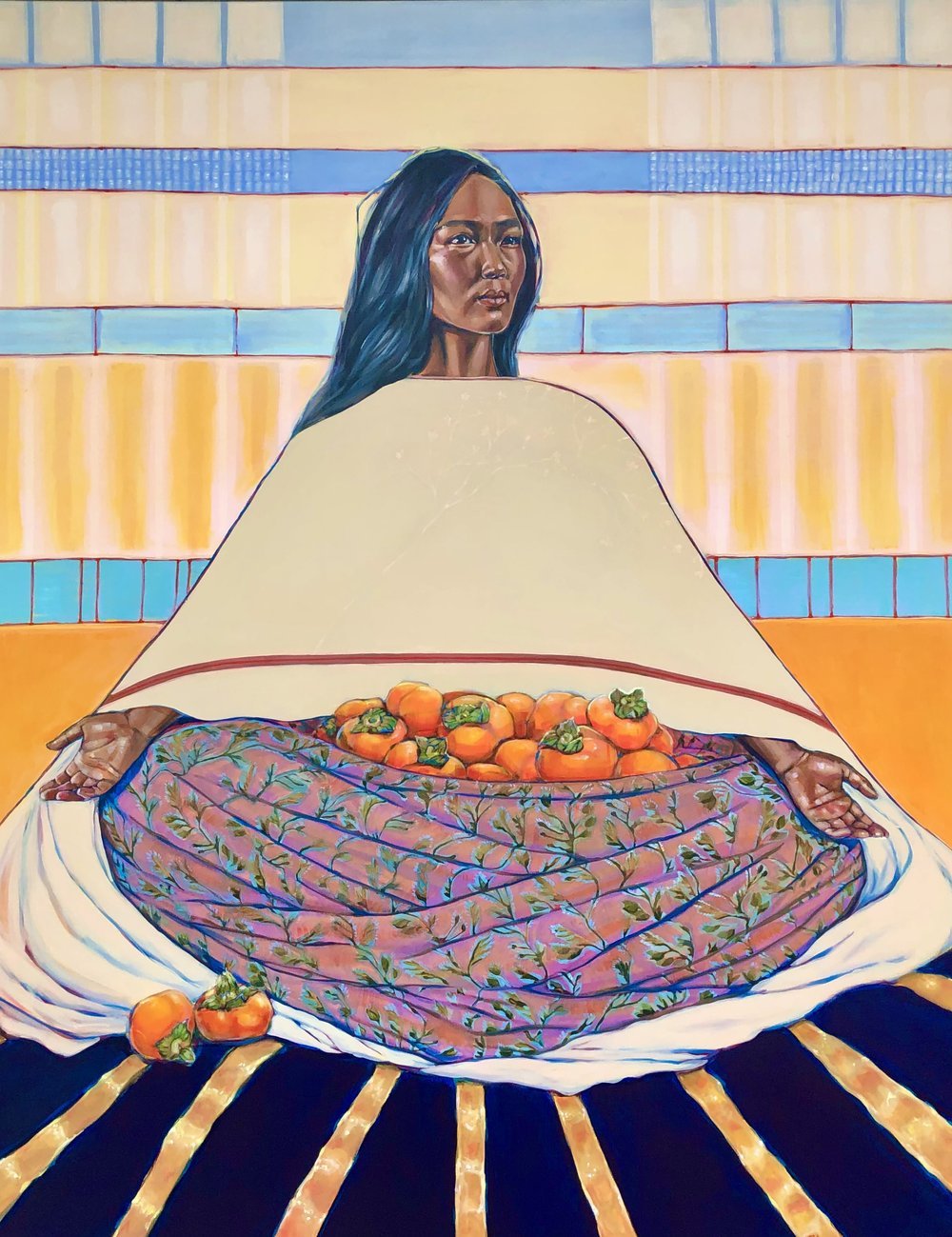

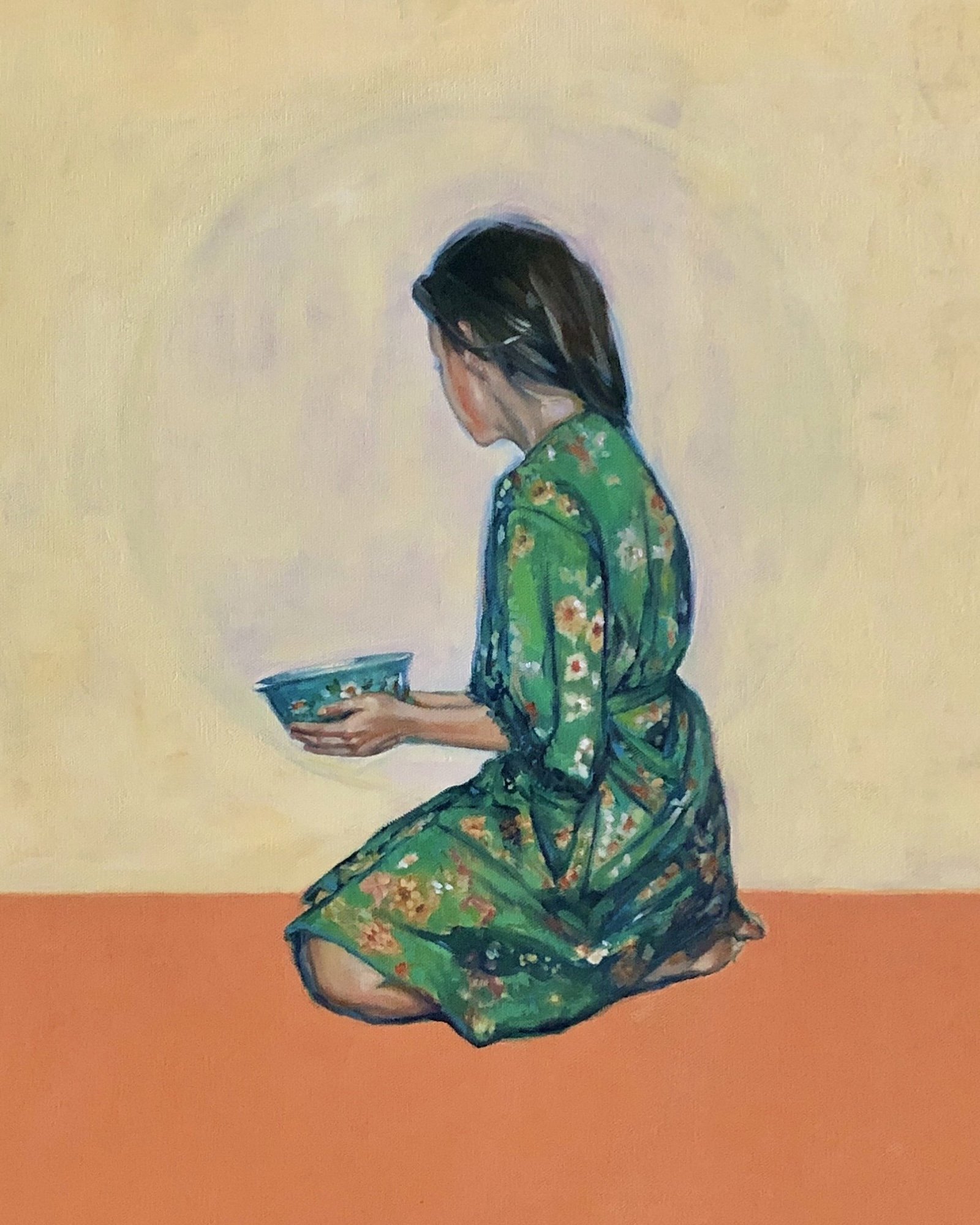

AAS: Faye, were you born and raised in Arkansas?
FH: I was born in Oklahoma and moved around quite a bit throughout my lifetime, but my grandmother and great-grandparents have deep roots in Center Hill/Beebe areas of Arkansas. When I arrived in Arkansas in 2022 it immediately felt like I was returning home, even though I had spent virtually no time in the state prior to relocating from Florida. I am a completely self-taught creative, starting out as a composer, musician and photographer and eventually evolved into a portrait artist.
AAS: So, you were always interested in the fine arts like music and design, but what made you decide to now concentrate on painting? Or do you really consider painting your most satisfying artistic expression?
FH: I’ve always been drawn to visual art, but honestly, I never thought I would develop the skill for it. Painters and portrait artists in particular, seemed to be practicing a creative discipline way out of my league. They were - and still are - a group of people I deeply admire. As a child I studied Norman Rockwell’s Saturday Evening Post covers, marveling at the fine detail and storytelling he was able to convey through each scene, but it wasn’t a path I thought I would take because it seemed too complex for me. Once I started the process of teaching myself how to paint, however, the structure and procedure for building an image on canvas immediately made sense to me. It was almost like a built-in intuitive framework had always existed, I had just never tapped into it. While music still remains an important part of my artistic life, painting has unlocked a tremendous amount of creative potential that continues to shape my experience as a human in the world. And yes, it is very satisfying.
AAS: I first came to learn of your work through your 100 Faces of Conway Project. What inspired that project? And I love your painting of Barbara Satterfield among others.
FH: The inspiration for the 100 Faces of Conway Project was a personal need to reach out to my new community and see who lived in it. I moved to Conway sight unseen and was going through a period of grief, so the project was a way for me to flow through it and try to take outward action rather than keeping an inward focus. Barbara was among the very first people I asked to entrust me with painting their portrait and she was so kind as to say yes! The whole concept of the project was built on sharing stories and becoming connected. I am still grateful that so many people agreed to be a part of it to make the circle complete to reach that 100th portrait. Because of the number of portraits in the project, I was using photographs as references and had to trust that their likeness would be accurate from the images they submitted. I had the benefit of receiving stories from each of them describing their lives in Conway, so I had a small window into their personalities and that made a difference in how I painted them. Being able to experience the exhibition at the Windgate Museum of Art at Hendrix College made a significant impact on how I was able to highlight and honor each person, most of whom I met for the first time on opening night. It was a profound testament to what can happen when people collaborate and choose kindness over fear.
Barbara Satterfield, 12” x 12”, acrylic on wood panel


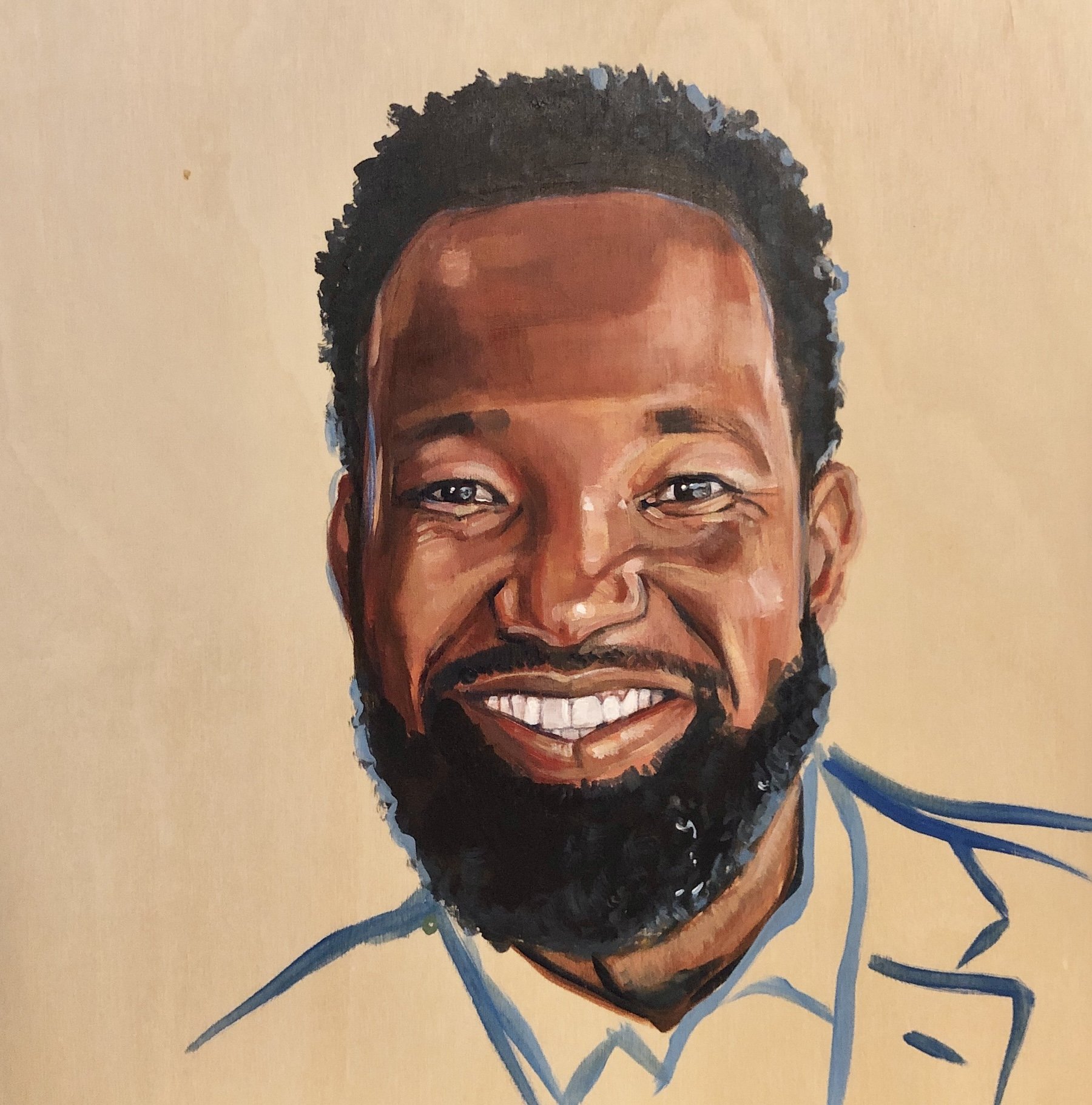
AAS: Some of your most charming paintings are of fairies. And in some, like in Plum Fairy, the fairies are depicted in ways that suggest medical issues. What is that series about?
Plumb Fairy, 20” x 16”, acrylic on cavas
FH: Thank you for that! As you probably noticed, fairies are not my typical subject matter, but during a time of immense physical challenges I was unable to paint upright, so I needed to utilize a small, lightweight canvas so I could continue my studio practice while reclining. I was approaching my art as an act of play, trying to stay positive, and decided on a whim to create a single fairy in an orange tree. During the process of painting it I realized how much I was enjoying myself. I decided to paint one fairy after another to stay disciplined, but also because it was hard to be sorrowful when the paintings were so colorful and pleasant to look at in my studio. As I began to accept my own disability, the vision for a series developed into fairies experiencing various disabilities and facial differences that would potentially delight children and adults who could recognize themselves in the illustrations. The paintings turned into The Lovely Fruit Fairies a children’s book that contains all of the illustrations and sweet, simple poems that I wrote with the help of my daughter Zélie. It just became available on Amazon, and I’ll be conducting a book tour this spring to celebrate children with disabilities.
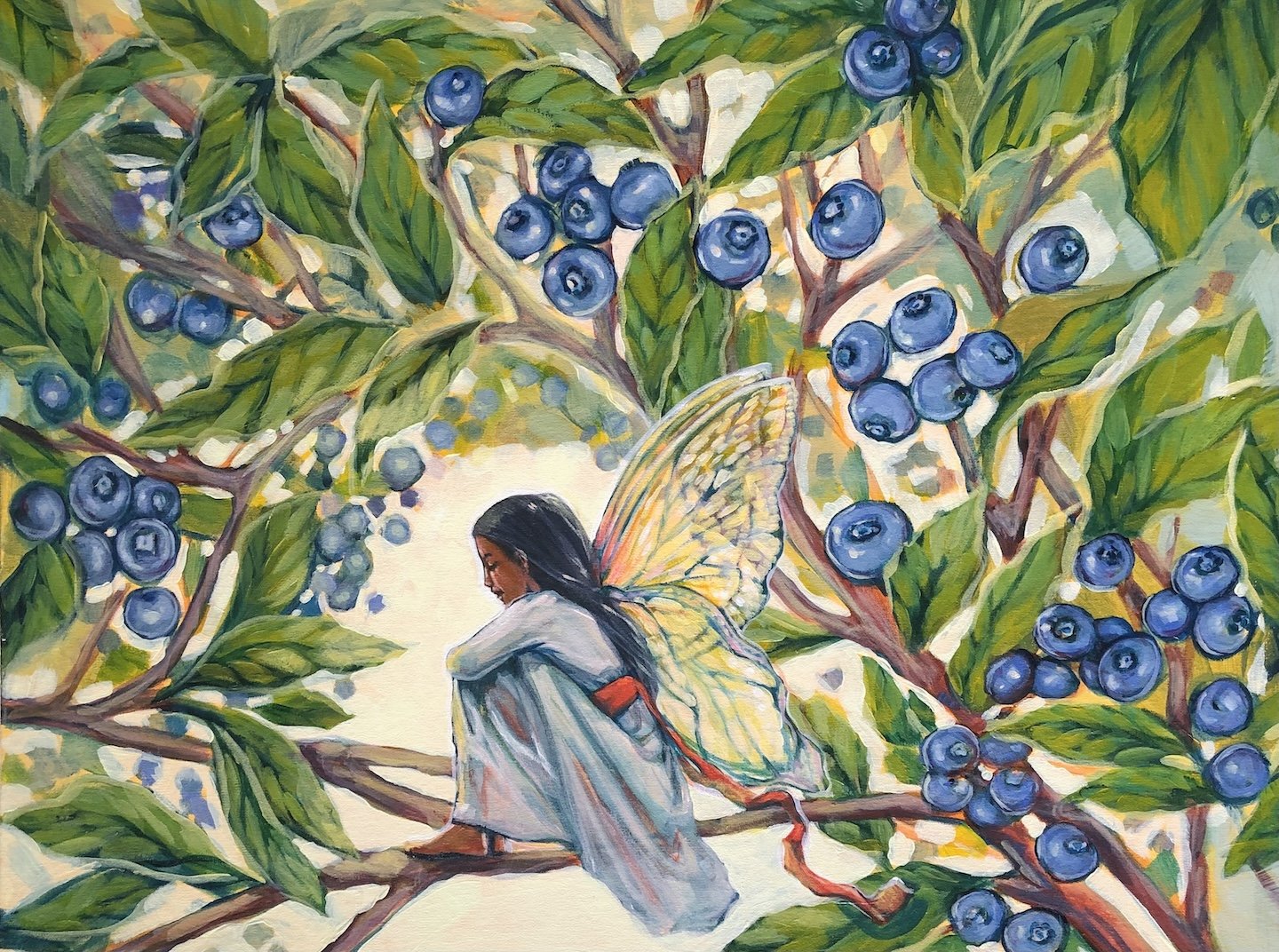
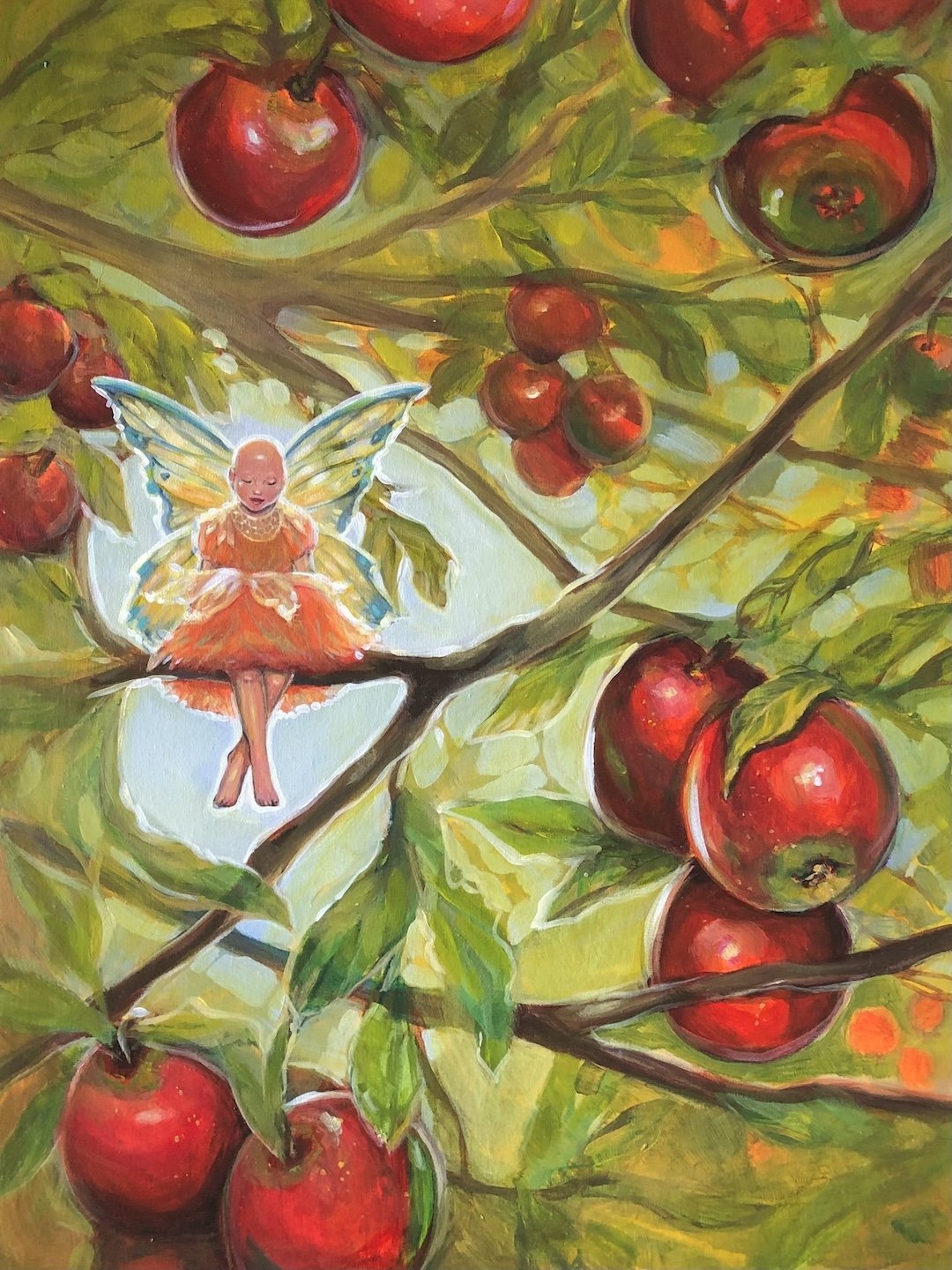
AAS: I really love The Violinist. Her expression and intensity are marvelous. Was that painting inspired by your love of music?
The Violinist, 20” x 16”, acrylic on canvas
FH: This portrait was the first time I incorporated music into my art. I’ve always admired violinists and thought it would be a wonderful way to create a portrait that was painted in a modern style but hinted at the woman being from a bygone era. It was painted using acrylic on wood panel that had a grainy texture to it, which lent itself to being a great surface for the dry brushing around the edges and an exposed underpainting. The goal was to make the portrait have a windblown appearance with very loose brushstrokes and an urgency of movement against her solemn expression that hopefully invites the viewer to ponder on where she is in time.
AAS: You paint very strong and empowered women. Emanate is one of my favorites. Tell me about it.
Emanate, 24” x 24”, acrylic on canvas
FH: This was a very recent portrait that I painted in between life-size, full body renderings of women that are part of a large collection of work I’m currently creating. I needed to return to a smaller canvas to get my bearings and paint from instinct, so to speak, to recalibrate and take a breath. The expression is proud and almost defiant - in a good way - and the light around her head, to me, is a signal of intense power and strength. It was what I needed to complete as a personal reminder to persevere.
AAS: Another very strong female force is depicted in The Artist’s Expectation. What is the story behind that painting?
The Artist’s Expectation, 48” x 36”, oil on canvas
FH: This is a self-portrait from a photo I took of myself soon after the 100 Faces of Conway Project exhibition became public. I captured the image of myself first thing in the morning to remember the way I felt in that moment: open, curious, at peace after reaching a summit. My hand is extended as a symbol of being ready to accept abundance - the background is a private timeline of my own life with its ebbs and flows, and the drapery is a story of rising up. If you look closely, you’ll see luck and blood and fragments of my childhood weaved throughout it. It is evidence of the direction my art has taken and directly influenced my next series.
AAS: In addition to portraits, you have also painted some wonderful landscapes. Tell me about On The Pond. I love the style of the painting.
On The Pond, 12” x 12”, acrylic on panel
FH: On The Pond is pure nostalgia. It’s from a photograph my late grandmother took of her property in Central Oklahoma many years ago. She had acreage that gave me and my siblings and cousins many hours of exploration and fun, and there was a pond in the middle that we would throw rocks into and occasionally swim in, our skin turning orange from the Oklahoma clay in the water. I painted it in an impressionist style as a way to mimic the fuzzy edges of memory.
AAS: I know you are very involved in the Central Arkansas Collective. Tell me about that group.
FH: In late 2022 I met with artists Barbara Satterfield and James Volkert to introduce myself and talk about how we could bolster the local art community to serve professional creatives. From that conversation we organized a group of really outstanding local artists and with the help of Nick Stevens and The Creative Institute of Central Arkansas, the vision evolved into an art gallery space downtown and thought-provoking Artist Talks during the Conway ArtWalk. We have had overwhelming support from the local community. I have never encountered such a motivated and hard-working group of individuals who are part of the collective and I’m proud to say that I am leading them into the next phase of our development as president, adding some very talented new members in the next few weeks. Our ultimate goal for the Central Arkansas Collective is to land in a permanent art gallery and to continue to add value to our beautiful city.
AAS: Faye, what can we expect next from you?
FH: There are a few exciting things I’m heading into, including a local television series called Meet the Conwegians: Humans at the Heart of our City. It’s a six-episode series created with Conway Corporation that is a more in-depth continuation of the 100 Faces of Conway Project and features me meeting and painting the portraits of various extraordinary residents of Conway. It’s been an adventure to be able to interact on a personal level with people and then see their reaction when their portrait is revealed. I’ll be launching The Lovely Fruit Fairies in early March and be in new territory with an accessible book tour and continue to work on the FND [Functional Neurological Disorder] Hope documentary and my newest portrait series featuring mothers and their children experiencing abundance, which is set to be completed in 2025. Looking back over the last year, I am filled with appreciation - for Christian Cutler at the Windgate Museum at Hendrix College, for the Central Arkansas Collective artists, Crystal, Jeff and Javan at Conway Corp., Jen and Mary at the Faulkner County Library, and the team at FND Hope who are making the documentary a reality. And of course, my husband Michael and our three children, who propel me forward and keep me grounded. I’m intrigued to see where my art goes from here and where my next inspiration will take me. I appreciate you taking the time to ask me these questions, Philip!


